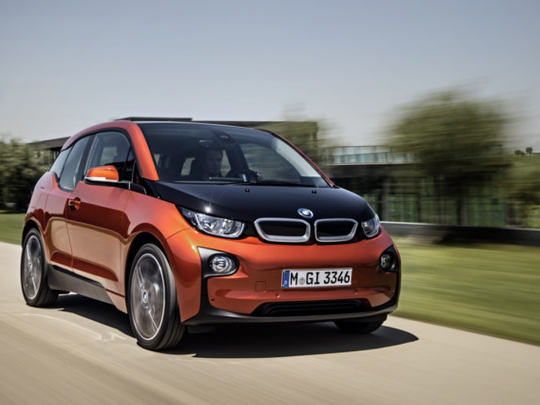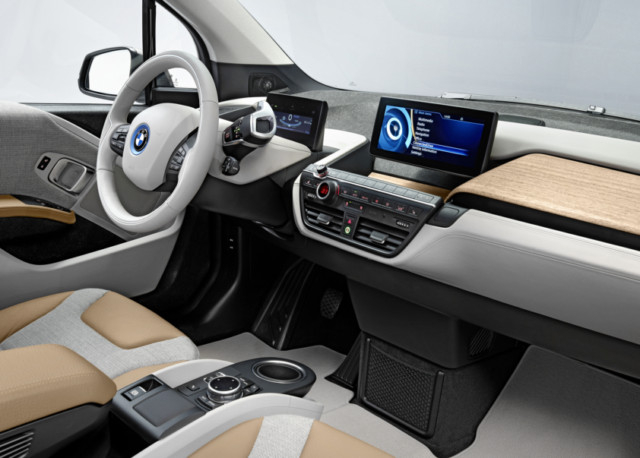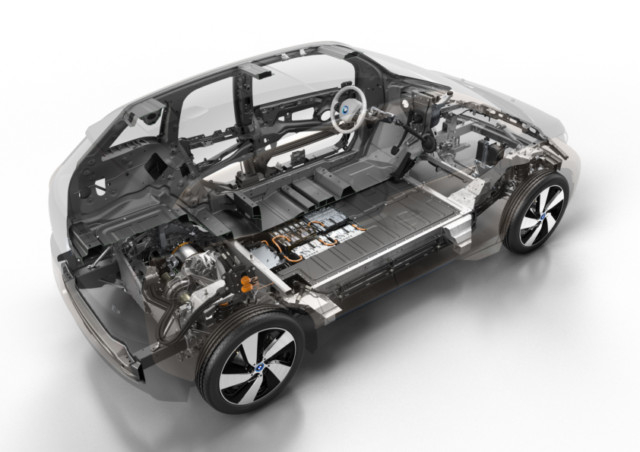
You’re not having déjà vu; these really are BMW’s latest shots of the production-ready i3 model, and yes the car looks pretty much exactly the same as the concept we saw at this year’s Geneva motor show.
That shouldn’t surprise anyone as BMW tends to show off concept cars that are just a smaller-diameter-wheel away from showroom reality, but now that the Group’s revealed more information about its environmentally conscious city runabout things are getting more interesting.
As an extended-range electric vehicle the BMW i3 is hardly groundbreaking — it uses an electric motor living over the rear axle with an option of a conventional two-cylinder 34bhp petrol engine that only acts as a generator to boost range from 130km to 300km. We’ve seen that all before in the Chevrolet Volt.
No, what makes the i3 a much more truthful champion of sustainable mobility is not its drivetrain, but its production methods. It all starts with BMW’s LifeDrive concept, which is basically the car’s platform made of carbon fibre-reinforced plastics and encompassing the complete powertrain, battery and chassis — it’s like the McLaren MP4-12C’s MonoCell but on a budget. Thanks to the composite ‘tub’ the car also tips the scales with a kerb weight of just 1,195kg, which makes it lighter than a Mini Cooper S.
BMW i8 prototype thrashed in Munich
In order to manufacture something like this — including more carbon fibre all over the body and elsewhere — in high-volume BMW has called on its plant in the US state of Washington to step up to the plate and account for a 10th of the world’s entire production of carbon fibre-reinforced plastics.
Crucially BMW says all the energy for the plant’s production of the material comes from local carbon-free hydroelectric power, while the electricity for complete BMW i3 production in Leipzig, Germany, is 100 per cent wind-generated for a 50 per cent lower energy consumption and 70 per cent lower water consumption compared to a typical vehicle.
For the environmentalists that means a truly clear conscience, because the BMW i3 begins its life pretty green already, and with its low weight and zero-emissions mobility (even with the optional petrol range extender fuel economy is rated at 0.6 l/100km) the sustainability just gets an added boost.
You’ll be happy to know, perhaps, that it’s not all about being green since the i3 also manages an equivalent of a very respectable 170bhp and a total of 250Nm (no point in counting the 34bhp petrol engine since it only drives the electric motor and not the wheels).
You may or may not be happy to know however that BMW Middle East is adamant this thing is not coming to our region since the infrastructure (charging stations, service centres, etc.) isn’t in place.
Shame, but if you like the idea of these green, socially responsible and sustainable production methods then the greenlit-for-the-UAE i8 will be right up your alley, 354 horsepower and all…













